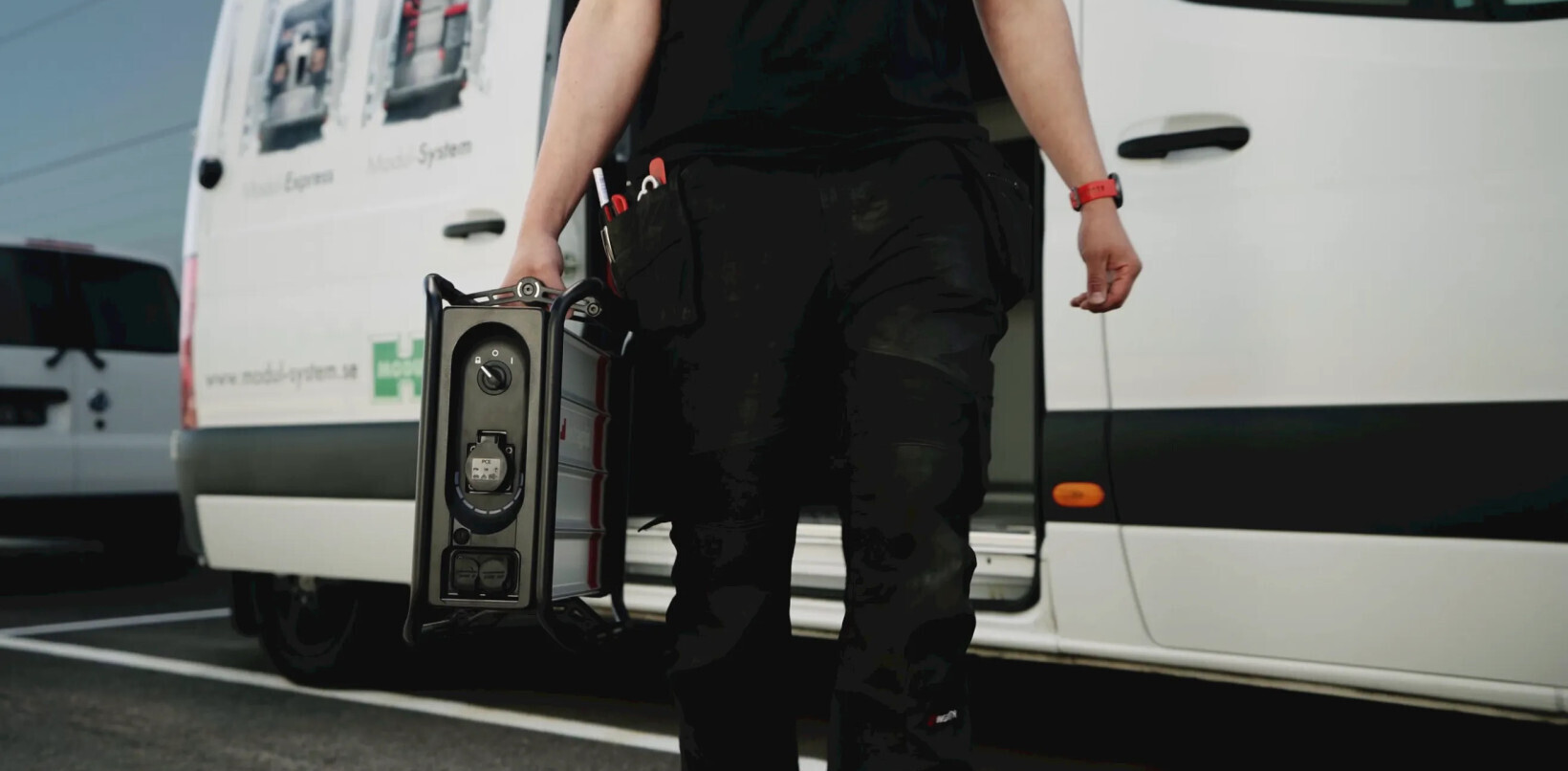
Climate tech is receiving a proportionally larger share of what is, undeniably, a muted venture capital investment environment. VC and private equity investment in the sector has, thus far in 2023, fallen by 40% — just as the evidence of the need for more money for potentially planet-saving technology is becoming increasingly insurmountable.
However, the total amount for all venture and equity investment was down 50.2% year-over-year. So, while climate tech is far from escaping the current economic downturn unscathed, it is faring… not as horribly as other tech segments.
Still, the news earlier this autumn that leading Dutch climate tech VC SET Ventures had raised €200mn for its fourth fund — doubling the size of its previous one — was particularly uplifting. The fund will invest in 20 to 25 European companies that are innovating the energy transition.
TNW sat down for a conversation with SET Ventures’ Managing Partner, Anton Arts, to see what it takes to be a venture capitalist in climate tech, the enormous economic opportunities arising from our move toward net-zero, and how startups garner favour in an increasingly difficult investment landscape.
“It’s a bit of a funnel,” Arts explains when discussing the process of selecting which companies to back among an avalanche of pitches. “The first thing we ask is: does this fit into our scope?”
Does it move the impact needle, and is there a market opportunity?
SET has a clear idea about what it wants to invest in — digital technologies that advance a carbon free energy system. “So a major question that we try to answer whenever a proposal comes to us is, how does this affect the energy system of the future?”
Arts adds that this is a much more narrow focus than what someone thinking about climate tech in a more generic way would have. However, as energy is linked — directly or indirectly — to 72% of global emissions, trying to address those emissions is a “more than large enough” problem: “We also ask ourselves, does this really move the needle in terms of impact?”
“The second area that we then focus on is really some of the same questions that all VCs try to answer. Do we think this is a fantastic founder team? Is there a market opportunity that is large enough? Can you truly develop a differentiated and unique offering in that market? And, ultimately, is it going to be financially rewarding to take on that opportunity?”
Flight to quality increases VC competition
After having found an exciting investment opportunity, the process then becomes somewhat of a two-way street. Sure, there is less capital up for grabs as the funding optimism of the past few years has waned (unless you are in generative AI, that is) — but the startups that meet the more stringent criteria can instead have their pick among suitors.
“In the current market, there is also a flight to quality, which means that the bar for what is a great company is raised. But for those companies that meet the bar, there is intense competition between investors in order to fund that opportunity,” Arts states, adding that there is also a founder who has to make a decision which investors to go with.
Additionally, Arts says it is a healthy market dynamic, and one that is influenced to a great deal by the fact that climate tech has moved from a relative niche from an investment perspective, to much more of a mainstream market.
Solving problems — why this, why now?
Another question that always comes up, Arts says, is “what problem is this solving? Why this, but also, why now? Because many of these problems are not new. What has changed in the past few years that now there is a solution to an existing problem that wasn’t there before? Maybe it is the technology, maybe it is the people, etcetera.”
And finally, Arts says, as a VC, you have to “skate to where the puck is going,” meaning you have to be willing to make a bet on something that the rest of the world hasn’t seen yet. Or, as he puts it — “what do you want me to believe that other people aren’t believing yet?”
When thinking about investing with environmental or social impact as a criteria, the question inevitably arises as to whether there are compromises in terms of return on investment versus doing a good thing for the planet. Arts would argue, perhaps unsurprisingly, that not necessarily — and definitely not when it comes to energy.
“We think that this transition to the energy system of the future is really a generational opportunity in magnitude,” he states.
Clean technologies will outgrow oil in revenue
Indeed, according to the International Energy Agency (IEA), a new energy economy is emerging, pushed forward by policy action, technology innovation, and the increasing urgency of the need to tackle climate change. This, the IEA says, provides a “huge market opportunity” for clean technologies.
The agency estimates that, if the world gets on track for net-zero emissions by mid-century, the annual market opportunity for wind turbines, solar panels, lithium-ion batteries, electrolysers, and fuel cells will grow tenfold to $1.2 trillion by 2050. That means that those five segments collectively would be larger than today’s oil industry and its associated revenues.
And that’s “just” the hardware stuff. The new energy economy will also require digital tools to manage the complex interactions and relationships between things like electricity, fuels, and storage markets. Managing platforms and data will become increasingly important parts of energy efficiency and clean energy innovation.
“What people might need to be reminded of is that you can’t always predict timelines. But that doesn’t mean they’re going to be longer. Sometimes you see changes happening very quickly. And for us as investors, we think that if you look at the past, then, of course, we’ve seen a lot of success in software businesses, and, for instance, business-to-consumer internet businesses.
“We think the opportunity of the next decade is really shifting to climate tech as a category, and we are absolutely convinced that we will see similar types of return expectations, as we’ve seen in the tech business in the past.”
One of the reasons for that, Arts says, is that more and more talent is moving into climate tech, having perhaps previously been successful in other industries and looking to make more of a difference. And, a chain is starting to emerge all the way from early stage investment to very large growth equity funds. SET invests across Europe at the Series A stage, but with the ability to keep supporting portfolio companies through multiple rounds of financing.
From physical assets to digital solutions
Essentially, SET Ventures believes in three things: that the world is changing very fast, and that the energy transition is the biggest trend driving markets in the next decades; that there is too much emphasis on miracle technologies that exist only in the lab and not enough on the business models and applications that will scale what’s right in front of us; and, from a systems perspective, value migration will move from only physical assets, to the collection of digital solutions that together form the energy system.
Among the startups and scaleups in SET’s portfolio are Dutch companies Sensorfact and Energyworx. The former helps clients reduce industrial energy waste through plug and play hardware, smart software, and dedicated consultants. Founded in 2016, Sensorfact has already scaled to 1,300+ customers in over 40 countries and identified more than 112+ GWh of energy savings. Energyworx is a SaaS provider for energy providers to ingest and manage data across the entire energy chain.
Another example of SET’s investment strategy is Germany’s Instagrid. The company has built a 20kg 230V portable power system for professionals to work off-grid. On a full charge (2.5 hours), an industrial vacuum cleaner can run for 105 minutes, you can brew 1,200+ cups of professional catering espressos, and high quality projectors can run on full brightness for five hours.
SET’s latest fund is backed by the European Investment Fund (EIF), Triodos Energy Transition Europe Fund, a.s.r., and Amsterdam-based Carbon Equity.
Get the TNW newsletter
Get the most important tech news in your inbox each week.



